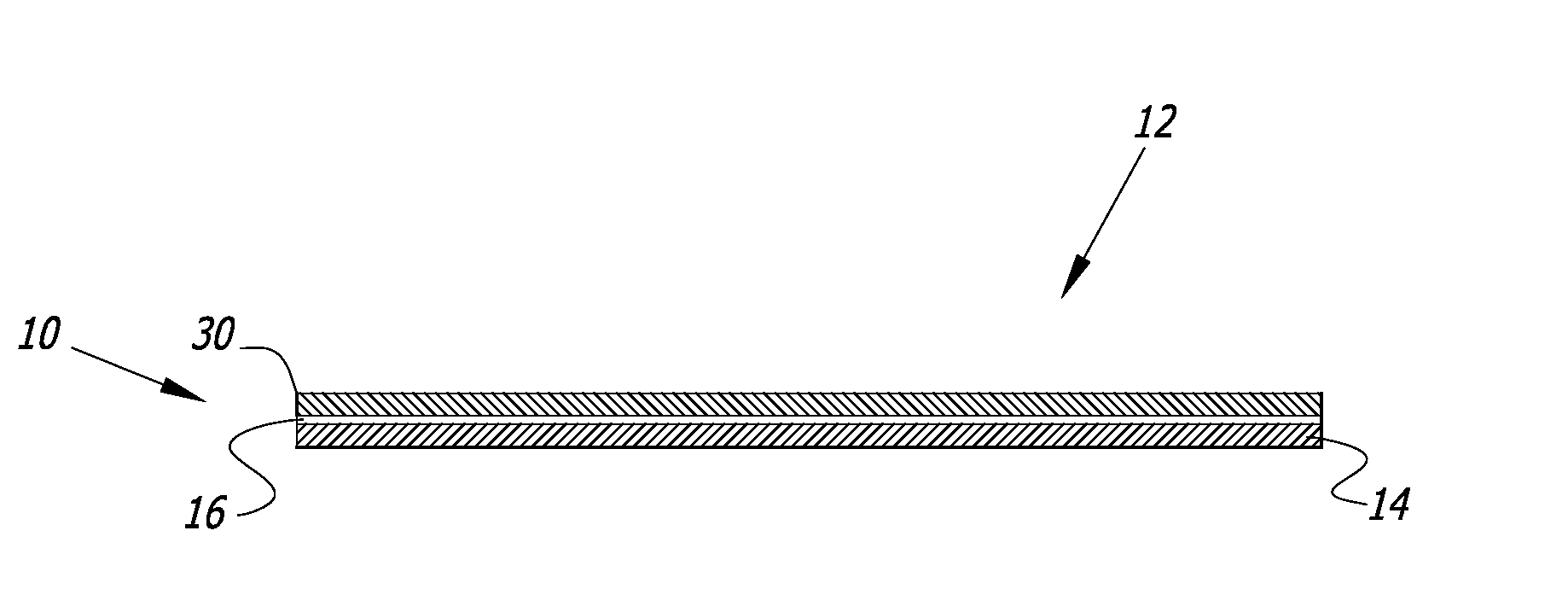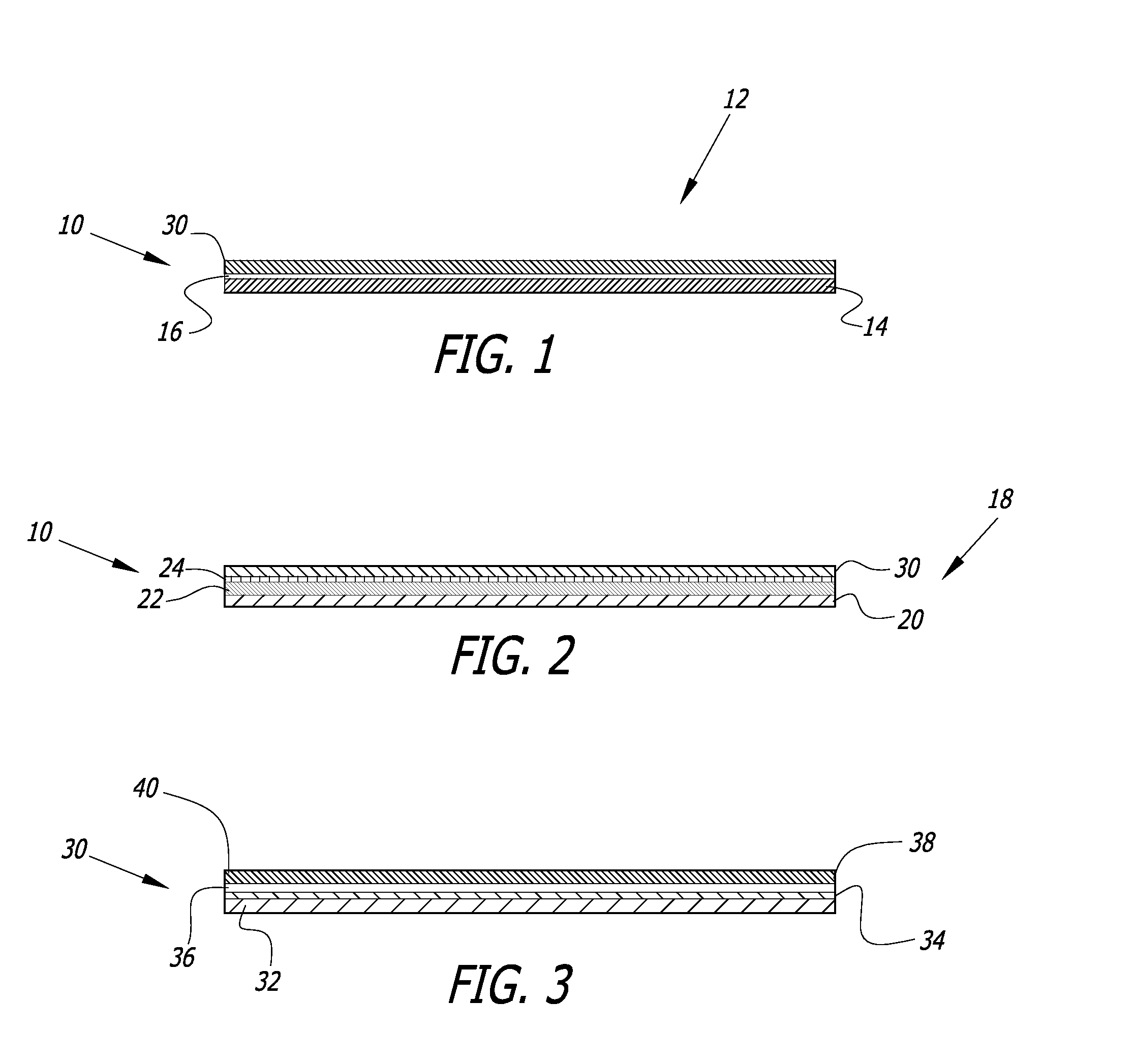Identification device having antimicrobial properties
a technology of identification device and antimicrobial property, which is applied in the direction of identification means, thermography, instruments, etc., can solve the problems of low surface-available silver, low amount of surface-available silver, and certain limitations of the potential antimicrobial effect of thermoplastic articles, and achieve inherent antimicrobial properties and antimicrobial properties
- Summary
- Abstract
- Description
- Claims
- Application Information
AI Technical Summary
Benefits of technology
Problems solved by technology
Method used
Image
Examples
Embodiment Construction
[0019]The present invention is directed to an identification device, preferably a bracelet or an adhesive label, having an exposed direct thermal layer configured for receiving identifying indicia by means of a direct thermal printer. The direct thermal layer also contains an antimicrobial additive that inhibits the growth of bacteria on the surface of the identification device. Such antimicrobial additives preferably increase the surface available silver on the identification device. In this invention, “bracelet” means a looped device configured to encircle a wrist, ankle or other appendage of a person. Examples include wristbands, anklets and similar devices.
[0020]Nowhere within the prior art has such a specific plastic article or method of making thereof been disclosed, utilized, or fairly suggested to produce a thermoplastic article with such desirable increased surface-available silver characteristics.
[0021]Any plastic in which a silver-based antimicrobial agent may be properly...
PUM
| Property | Measurement | Unit |
|---|---|---|
| weight | aaaaa | aaaaa |
| color | aaaaa | aaaaa |
| concentrations | aaaaa | aaaaa |
Abstract
Description
Claims
Application Information
 Login to View More
Login to View More - R&D
- Intellectual Property
- Life Sciences
- Materials
- Tech Scout
- Unparalleled Data Quality
- Higher Quality Content
- 60% Fewer Hallucinations
Browse by: Latest US Patents, China's latest patents, Technical Efficacy Thesaurus, Application Domain, Technology Topic, Popular Technical Reports.
© 2025 PatSnap. All rights reserved.Legal|Privacy policy|Modern Slavery Act Transparency Statement|Sitemap|About US| Contact US: help@patsnap.com


